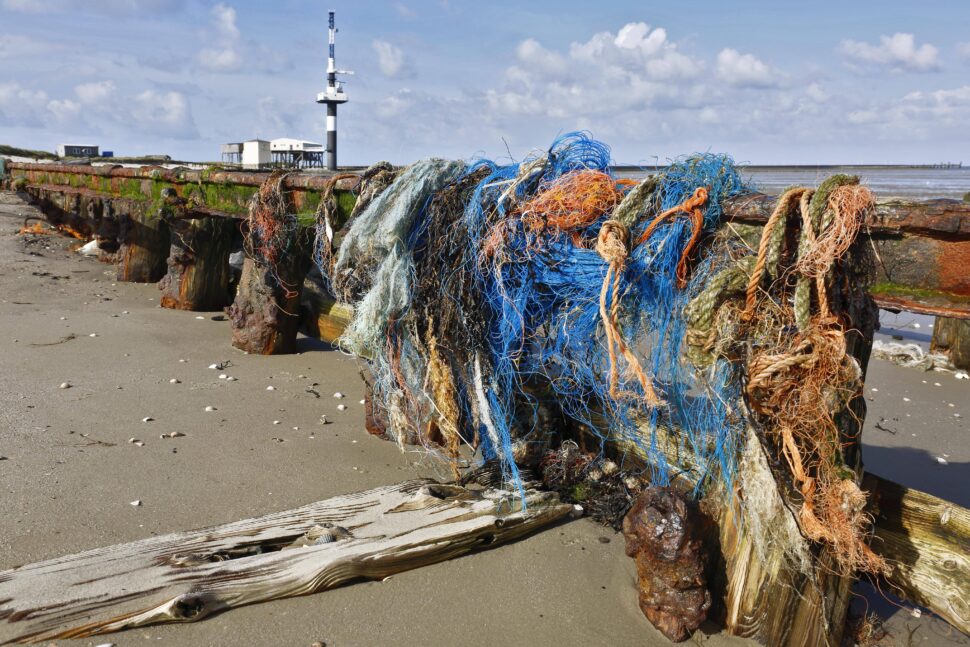environmental Protection
March 20, 2024
By Bettina Reckter
Reading time: approx. 2 minutes
They kill marine life and pose a significant threat to shipping and infrastructure. A pilot project to search for such ghost nets in the Baltic Sea was completed today.

Photo: imago images/imagebroker/Volker Lautenbach
As if there weren’t already enough micro and macro plastics floating in the sea. Now more and more so-called ghost nets are being added, i.e. fishing nets lost or intentionally left behind by fishermen at sea. Or they are run over by pleasure boats and workboats and are torn off in the process. Fish, seals and dolphins, yes, even whales and seabirds get entangled in it and die miserably. According to studies, more than 640,000 tons of such ghost nets are floating in the world’s oceans.
Reason enough for the state of Mecklenburg-Western Pomerania to work together with the environmental protection organization WWF to track down and recover such dangerous flotsam in the Baltic Sea. A total of €200,000 from fisheries levy funds was available for a pilot project that the state environment ministers had already decided on in 2019. The Federal Environment Ministry has now also reacted: Minister Steffi Lemke has announced that she wants to join a corresponding international initiative.
Reading tip: How much microplastic is in lakes and rivers?
WWF has already recovered 26 tons of trawls from the Baltic Sea
According to its own information, the WWF has already recovered more than 26 t of trawl and gill nets since 2015 – in fishing areas of the Baltic Sea from Usedom up to the Flensburg Fjord. Meanwhile, Federal Environment Minister Lemke is pushing for more efforts to recover such dangerous ghost nets. “Given the size of the problem, it cannot be a permanent solution for volunteers to do this work, financed by environmental organizations,” Lemke told the dpa news agency. “With the ghost nets, we will have to find a solution within the framework of the global plastic agreement that makes those responsible more liable.” It cannot be a long-term social task to clean up the garbage at sea. Those responsible for plastic waste must be held accountable
Also read our focus on the topic of “microplastics”
According to Federal Minister Lemke, funds from the European Fisheries Fund are also available to recover ghost nets. “We already had littering initiatives at the European level that also made public money available for them.” Germany will join an international initiative that addresses the issue of ghost nets. “This is not a German or European problem, but a global problem.” That is why Lemke is campaigning for the issue to be included in a global plastics agreement.